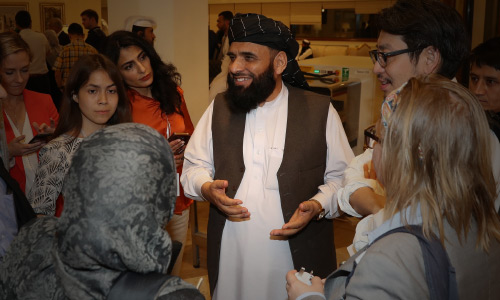After peace deal was signed between the Taliban and the United States in Qatar, it will be of great significance to view the record of the Taliban regime from its establishment to the downfall. Does the Taliban group still exercise its 2001 ideology or its attitude has been changed within the last two decades? Has the group nurtured belief in the participation of women and those of linguistic, religious, and ethnic minorities or will continue their past practices in case of returning to Afghanistan and only seeks not to pose threat to the United States’ interests?
The term Taliban – a religious group that emerged from seminaries almost two decades and half (1994) claiming to end civil unrest ongoing between Mujahidin and establish security – spread in public air. As a result of exhaustion from civil unrest, chaotic system, cruelty, and poverty, a number of Afghan people approached the Taliban optimistically. Shortly, however, the Taliban emerged as a destructive group with particular ideology and parochial and dogmatic narration from Islamic tenets seeking to rule the entire Afghan territory. The group declared its “Islamic Emirate” with capturing the capital city of Kabul. Afghanistan suffered the hardest period of history, especially since the world, including the United States, turned their back to the country. Afghans sustained painful tortures, torments, death, amputation, capture, massacre, poverty, and took refuge to foreign countries.
The 9/11 event, carried out by a group of 13 members of al-Qaeda network, which used Afghan soil as their military launch pad, and the US backlash against it led the world to focus their attention on Afghanistan once more. In 2001, all issues turned against the Taliban regime. That is, the Taliban group, which harbored al-Qaeda, encountered the world super powers led by the US, which resulted to the collapse of its regime. Thousands of forces from dozens of states entered Afghanistan, and, besides defeating the Taliban, contributed to the establishment of the Islamic Republic of Afghanistan on the basis of democratic principles and public votes.
On the surface, the public believed that the Taliban were a ragtag militant group resided rocky terrains and Pakistani troubled belts and lived in hidden without the capability to return ever. Contrary to the public perspective, the Taliban could re-organize its group and returned to the battlefield against the Afghan elected government. The role of the neighboring countries in the Taliban’s re-organization is evident. The Taliban were the most appropriate option for the countries which were unsettled with the Afghan status quo and sought to put pressure and create chaos in Afghanistan.
Former Afghan President Hamid Karzai established the Peace Consolidation Commission in 2004, which Afghans believed was giving concessions to the Taliban. It was later extended to the High Peace Council (HPC) in 2010. Currently, Kabul has founded Ministry of Peace within the government body tasked to pursue the peace affairs. In the meantime, the HPC was not officially disbanded, except for its secretariat.
During the Karzai administration, the Taliban made the highest takeover, especially within his final months and years. Karzai issued a decree stating that Afghan forces were not allowed to call for the support of NATO’s airstrike against the Taliban, but only in exceptional cases. Such issues as well as controversies over signing the Bilateral Security Agreement with Washington provided better opportunities for the Taliban to extend their reach.
Within the Karzai and Ashraf Ghani’s presidential period, the Taliban, as it controlled parts of the Afghan territory, resorted to horrific practices which included: roadside bombing, attacking government infrastructure, killing people on highways, assassinating soldiers and civilians, conducting desert courts, sending suicide-attackers to public and sacred places, burning schools and preventing girls from going to school.
Currently, as the Taliban have signed peace deal with the US, control considerable parts of the country. They believe in no principles other than those of themselves. Even on the day of signing peace, Taliban representatives and leaders reiterated their strict beliefs and threatened Afghan people, including women. The Taliban have so far shown no commitment to the principle of national participation.
The image of the Taliban on the signing ceremony in Qatar, as the Taliban leaders and representatives declared victory and raised their white flags as a gesture of triumph, were a reminder of bloody days for a number of Afghan people when they captured Kabul and ruled Afghanistan with the barrel of gun, torture, and force within five years.
The process of inter-Afghan talks and the Taliban’s practices in coming days will be significant for the public to change their perspective. For Afghan people, the Taliban’s persistence on denying the official recognition of the Afghan government and negotiating with it means their resistance to change their strict and unacceptable attitude.
Home » Opinion » What Changes Have Taliban Undergone Since the Beginning?
What Changes Have Taliban Undergone Since the Beginning?
| Moh. Reza Huwaida

